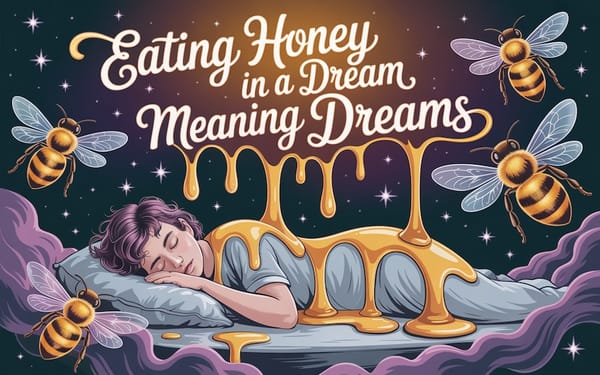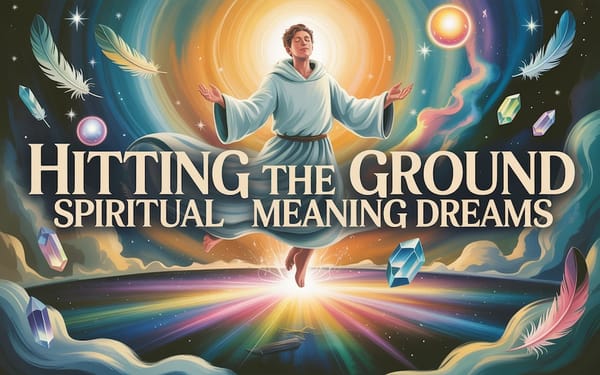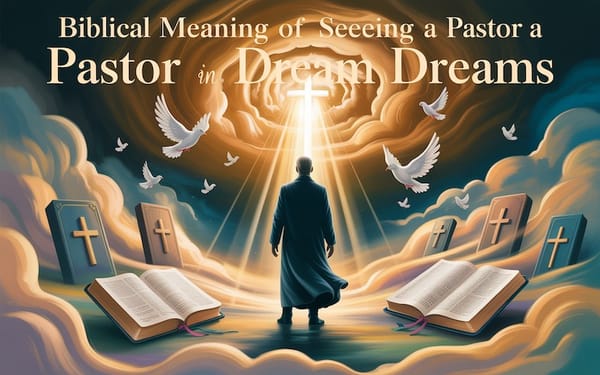The Profound Mystery of Meeting All Versions of Yourself in Dreams: What It Means to Integrate All Potential Paths of Existence
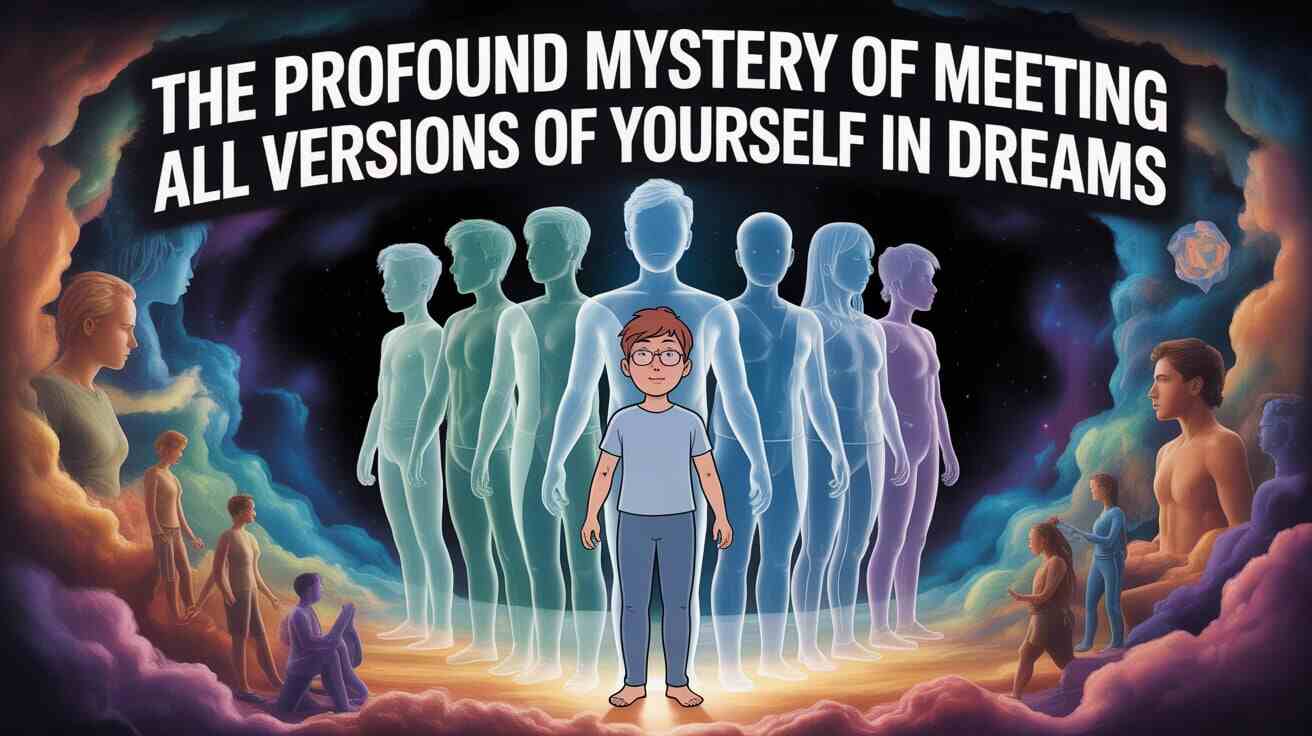
Picture this: you find yourself in a vast, ethereal space where countless versions of yourself stand before you—some familiar, others startlingly different. There's the you who became an artist instead of an accountant, the you who moved to Paris, the you who said yes when you said no, and the you who chose courage over comfort. This isn't just a dream; it's a profound psychological phenomenon that has captivated dreamers across cultures for millennia.
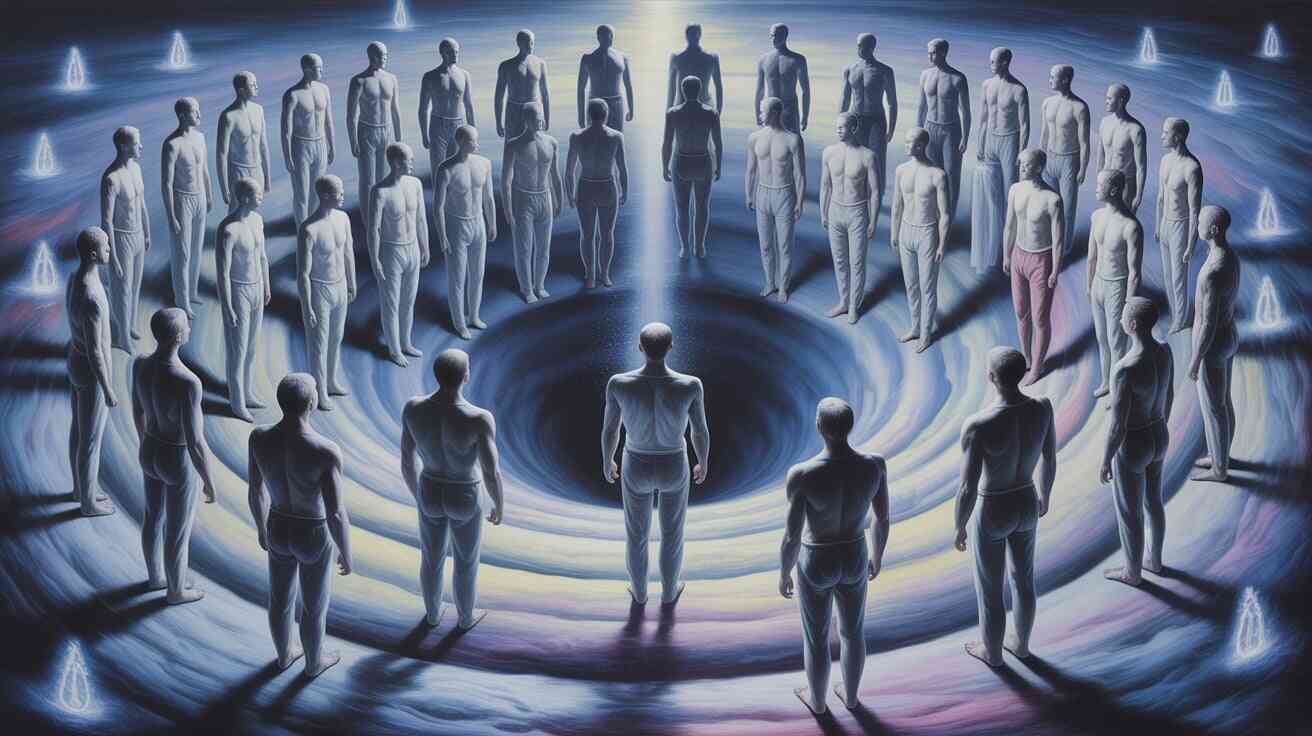
Dreams of encountering multiple versions of yourself from parallel timelines represent one of the most psychologically rich and spiritually significant dream experiences known to humanity. These dreams transcend ordinary nighttime narratives, offering glimpses into the deepest chambers of consciousness where all potential selves converge. From ancient shamanic traditions to modern quantum theories, this dream theme has consistently emerged as a powerful symbol of integration, wholeness, and the eternal question of "what if?"
Spiritual Meaning of Meeting All Versions of Yourself in a Dream
What do they really mean? Let's explore the symbolic, psychological, and scientific interpretations of this intriguing dream phenomenon that challenges our very understanding of identity and existence.
When you dream of meeting all versions of yourself from parallel timelines, you're experiencing what many consider to be the ultimate integration dream—a profound psychological event where your subconscious mind attempts to reconcile all possible paths of your existence. This dream doesn't merely reflect your current state of being; it represents your soul's desire to understand and embrace the totality of who you are, who you've been, and who you might become.
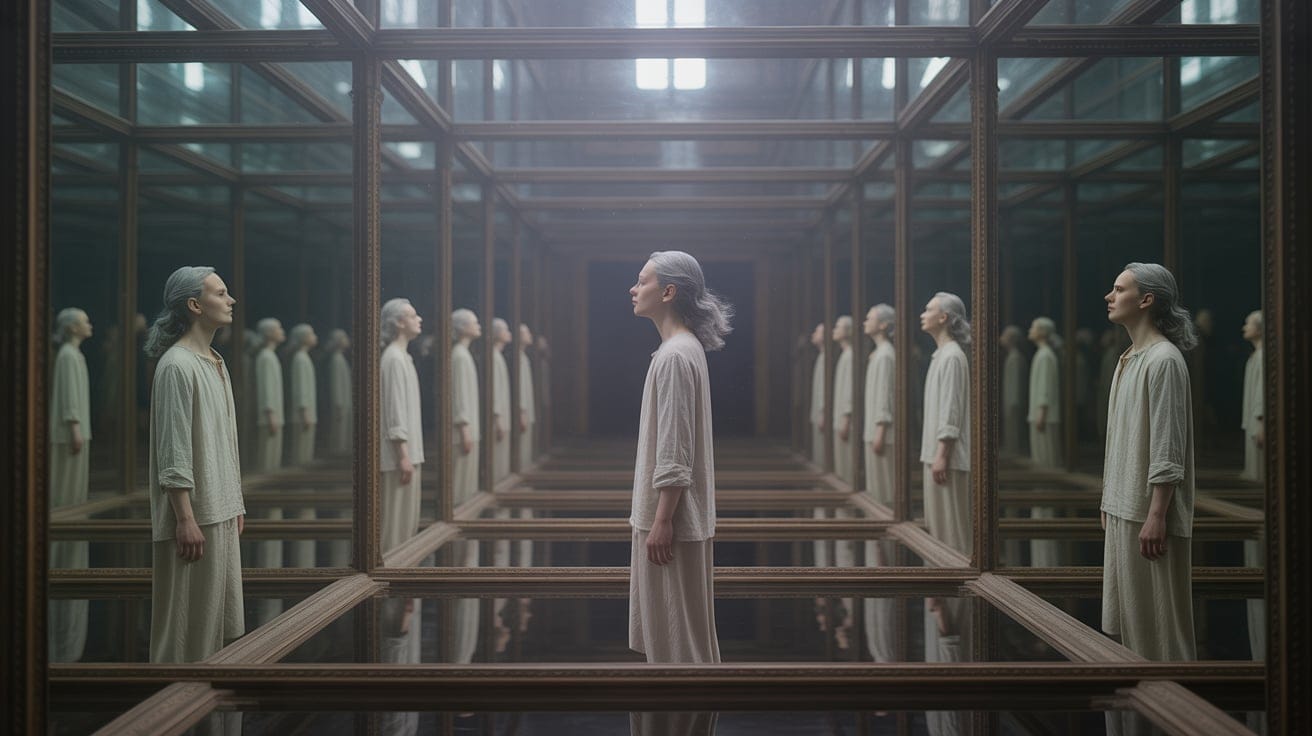
These dreams often occur during pivotal life moments when we're standing at crossroads, questioning our choices, or seeking deeper meaning in our existence. They serve as cosmic mirrors, reflecting not just our current reality but the infinite possibilities that exist within the quantum field of consciousness.
The Symbolic and Spiritual Significance of Meeting All Versions of Yourself
From a spiritual perspective, encountering multiple versions of yourself represents the soul's journey toward wholeness. In many esoteric traditions, this dream symbolizes the integration of the shadow self, the acknowledgment of unlived lives, and the recognition that you are far more expansive than your current identity suggests.
The different versions of yourself in these dreams often embody various aspects of your personality that you've either suppressed, neglected, or never had the opportunity to explore. The successful businesswoman version might represent your ambition and drive, while the bohemian artist version could symbolize your creative and free-spirited nature. Each version carries sacred wisdom about paths not taken and potentials waiting to be activated.
Spiritually, this dream suggests that you're ready to transcend the limitations of linear thinking and embrace a more multidimensional understanding of your existence. It's your higher self inviting you to recognize that you are not just one fixed identity but a collection of infinite possibilities, all equally valid and valuable.
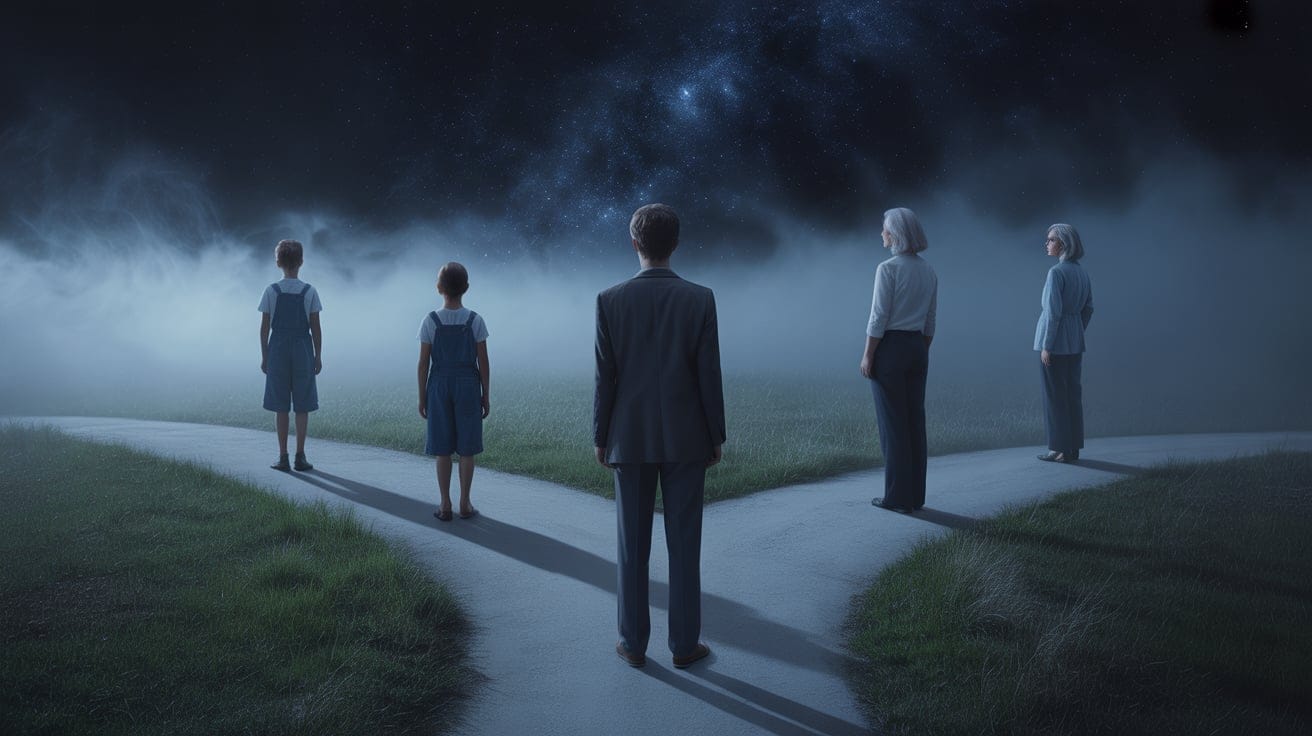
The meeting itself often takes place in liminal spaces—libraries, gardens, crossroads, or ethereal realms—symbolizing the threshold between conscious and unconscious awareness. These sacred spaces represent your inner sanctuary, where all aspects of self can coexist without judgment or conflict.
What Do Different Meeting Scenarios Mean?
The nature of your encounter with these alternate selves reveals profound insights about your current psychological and spiritual state. Each scenario carries its own symbolic weight and interpretive significance.
Harmonious Gathering: When all versions of yourself interact peacefully, sharing wisdom and embracing each other, this indicates a healthy process of self-integration. You're learning to accept all aspects of your personality without judgment, suggesting strong self-compassion and emotional maturity.
Conflicting Selves: If your alternate selves argue, compete, or show hostility, this reflects internal conflicts about life choices and identity. You may be struggling with regret, self-criticism, or feeling torn between different aspects of your personality. This scenario often emerges during periods of identity crisis or major life transitions.
Teaching and Learning: Dreams where different versions of yourself share knowledge or skills indicate your subconscious mind's attempt to integrate lessons from unexplored paths. The successful entrepreneur version might teach you about confidence, while the spiritual seeker version could offer insights about inner peace.
Merging or Fusion: Some dreamers experience their alternate selves literally merging into one being. This represents the ultimate integration of all aspects of self—a profound spiritual achievement that suggests you're ready to embody your full potential without internal division.
Silent Observation: When alternate selves simply observe each other without interaction, this often indicates you're in a phase of deep self-reflection, contemplating life choices without judgment or the need to change anything immediately.
Psychological Interpretations of Meeting All Versions of Yourself
From a Freudian perspective, these dreams represent the ego's attempt to reconcile with the id and superego across multiple potential life paths. Freud would interpret the various selves as different expressions of repressed desires and societal expectations. The meeting represents a psychological negotiation between what you want, what you believe you should do, and what you actually do.
Jungian analysis offers perhaps the richest interpretation of these dreams. Carl Jung would view this as an encounter with the collective unconscious, where all potential selves exist simultaneously. The different versions represent various archetypal energies within your psyche—the Lover, the Warrior, the Sage, the Creator. Meeting them all suggests you're approaching individuation, the process of becoming whole by integrating all aspects of your personality.
Jung would particularly emphasize the shadow integration aspect of these dreams. Often, the alternate selves represent parts of your personality you've rejected or denied. The meeting provides an opportunity to reclaim these lost aspects and achieve greater psychological wholeness.
Reiki and energy healing perspectives interpret these dreams as encounters with your multidimensional self across different vibrational frequencies. Each version of yourself exists on a different energetic plane, and the dream represents your energy body's attempt to align and harmonize these various frequencies. This integration can lead to enhanced intuitive abilities and greater spiritual awareness.
Modern gestalt psychology would view each alternate self as a projection of different aspects of your current personality. The dream becomes a therapeutic dialogue between various parts of yourself, offering opportunities for healing and integration that might not be possible in waking consciousness.
Common Causes and Factors Behind These Dreams
Several psychological and life circumstances commonly trigger dreams of meeting alternate selves. Understanding these triggers can provide valuable insights into why you're experiencing these profound dreams at this particular time in your life.
Major Life Transitions represent the most common trigger for these dreams. Whether you're changing careers, ending relationships, moving to new locations, or entering different life phases, these transitions naturally prompt questions about alternative paths and unlived lives.
Midlife Reflection often intensifies these dreams as people naturally begin questioning their choices and wondering about roads not taken. The psyche uses these dreams to process existential questions and integrate wisdom from unexplored possibilities.
Decision-Making Pressure can trigger these dreams when you're facing significant choices. Your subconscious mind creates scenarios where you can observe the potential outcomes of different decisions by meeting selves who made alternative choices.
Creative Blocks sometimes manifest as these dreams, particularly for artists, writers, and innovators. The alternate selves often represent different creative expressions or artistic paths, offering inspiration and creative integration.
Spiritual Awakening periods frequently feature these dreams as consciousness expands to embrace broader perspectives of identity and existence. You may be naturally developing greater awareness of your multidimensional nature.
Scientific Explanations for Meeting All Versions of Yourself in Dreams
From a neuroscientific perspective, these dreams can be understood through several fascinating mechanisms. The brain's default mode network, which becomes active during rest and introspection, may generate these scenarios as part of its natural pattern-recognition and simulation processes.
Memory consolidation research suggests that dreams help integrate experiences and potential scenarios. Your brain might be processing various life possibilities by creating detailed simulations of alternate selves, helping you understand different aspects of your personality and potential.
Quantum consciousness theories propose that consciousness itself might exist across multiple dimensions or timelines. Some researchers suggest that these dreams could represent genuine encounters with alternate versions of yourself existing in parallel realities, though this remains highly speculative.
Neuroplasticity studies indicate that imagining different versions of yourself can actually strengthen neural pathways associated with those traits. These dreams might serve an adaptive function, helping you develop psychological flexibility and resilience.
REM sleep research shows that this sleep phase is crucial for emotional processing and memory integration. The vivid, emotionally rich nature of these dreams suggests they occur during deep REM states when the brain is most capable of complex emotional and symbolic processing.
Coping Strategies for Processing These Dreams
These powerful dreams require thoughtful processing to maximize their healing and integrative potential. Here are effective strategies for working with these profound experiences:
Dream Journaling becomes essential for tracking patterns and insights from these dreams. Record not just the events but your emotional responses to each alternate self. Notice which versions evoke joy, fear, regret, or curiosity.
Active Imagination techniques, developed by Jung, can help you continue the conversation with your alternate selves in waking consciousness. Set aside quiet time to mentally revisit the dream and engage in dialogue with different versions of yourself.
Integration Practices might include identifying positive qualities from alternate selves that you'd like to develop in your current life. If your artist self displayed confidence, explore how you can cultivate that quality in your present circumstances.
Professional Support can be valuable, particularly if these dreams trigger significant emotional responses or life questions. Therapists trained in dream work, Jungian analysis, or transpersonal psychology can provide skilled guidance.
Meditation and Mindfulness practices help you maintain awareness of your multifaceted nature without becoming overwhelmed by the complexity. Regular meditation can also increase the likelihood of lucid dreaming, allowing for more conscious interaction with alternate selves.
Creative Expression through art, writing, or movement can help integrate insights from these dreams. Create artwork representing your various selves or write dialogue between different versions of yourself.
Summary & Final Thoughts
Dreams of meeting all versions of yourself from parallel timelines represent some of the most profound and transformative experiences the psyche can offer. These dreams invite you to transcend limited self-concepts and embrace the infinite nature of your being. They challenge you to integrate disowned aspects of your personality, heal internal conflicts, and recognize the vast potential that exists within you.
Whether viewed through spiritual, psychological, or scientific lenses, these dreams consistently point toward the same fundamental truth: you are far more expansive and multifaceted than your everyday identity suggests. Each alternate self carries wisdom, skills, and perspectives that can enrich your current life experience.
The key to benefiting from these dreams lies not in trying to become like your alternate selves, but in integrating their gifts into your authentic expression. You don't need to change your entire life; you need to recognize and embrace the fullness of who you already are.
These dreams often mark important evolutionary moments in consciousness, suggesting you're ready for greater psychological integration and spiritual expansion. Trust the process, remain curious about what each version of yourself has to teach, and remember that meeting your alternate selves is ultimately about coming home to the completeness of your own being.
Frequently Asked Questions
Q: Are these dreams about parallel universes real? A: While quantum physics suggests parallel realities might exist, these dreams are better understood as psychological phenomena representing different aspects of your personality and potential rather than literal encounters with alternate timeline versions of yourself.
Q: Why do some alternate selves seem frightening or negative? A: Frightening alternate selves often represent shadow aspects of your personality—parts you've rejected or feared. These versions appear to help you integrate these aspects rather than continue rejecting them, which is essential for psychological wholeness.
Q: Can I learn to have these dreams more frequently? A: While you can't force specific dreams, practices like meditation, dream journaling, active imagination, and asking your subconscious for guidance before sleep can increase the likelihood of meaningful dream experiences.
Q: What if I feel overwhelmed by seeing so many versions of myself? A: Feeling overwhelmed is normal with such profound dreams. Focus on integration rather than trying to understand everything at once. Work with one or two alternate selves at a time, and consider seeking support from a therapist familiar with dream work.
Q: Do these dreams predict my future? A: These dreams are less about prediction and more about integration and understanding. They show potential rather than predetermined futures, helping you understand your capabilities and choices rather than revealing fixed destinies.
Q: Is it normal to feel sad or regretful after these dreams? A: Yes, these dreams can trigger grief for unlived lives or regret about past choices. This is part of the integration process—acknowledging what wasn't chosen while appreciating what was. The sadness often transforms into acceptance and wisdom over time.


